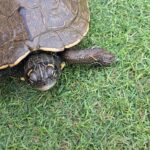If you feel like your reef aquarium is missing a bit of color, fear not. We’ve got just the coral for you! Meet the Acan coral from the genus Acanthastrea, which happens to be both easy to care for and excessively colorful. This is a must have large polyp stony coral for beginning and more experienced aquarists.
Keep reading for everything you need to know about Acan coral care and growing this coral in your home aquarium!
| Name (Common, Scientific) | Acan coral, Acan Lord, Acanthastrea, Micromussa |
| Temperature | 72-78 °F |
| Salinity | 1.023-1.025 |
| pH | 8.1-8.4 |
| Difficulty level | Easy-intermediate |
| Temperament | Semi-aggressive |
| dkH | 8-12 |
Acan coral appearance
As with most corals, the main reason so many aquarists keep Acan corals is due to their spectacular colors. Naturally found in the Indo-Pacific at depths up to 30 meters (100 ft), they’re also referred to as brain corals due to their shape.
Acan corals are mostly reddish or orange, although there’s a wide range of beautiful bright colors available, including purple, brown, blue, green and more.
Taxonomy
As with many coral species, the taxonomy of this one is a bit messy. “Acan coral” is a common name for a whole bunch of corals with similar appearances and care requirements.
Because one the most popular Acans was recently placed into a different genus, the common name now actually spans two genera: Acanthastrea and Micromussa. The species in question is now named Micromussa lordhowensis, also known as the Acan Lord. This is one of the most coveted and expensive Acans.
Acan coral care
The great thing about these corals is that they’re not overly challenging to care for. If you’ve got some coral experience, you should be able to grow this one! It’s relatively hardy, preferring moderate flow and lighting in the aquarium. Standard reef parameters will work fine.
Make sure your tank is fully established before adding an Acan coral. And don’t forget to also make sure it has plenty of space: although these corals aren’t hugely aggressive, they’re not exactly the ideal neighbors either. They can reach about an inch in all directions with their sweeper tentacles, so don’t place yours too close to other corals or it might end up damaging them!
Tip: Love corals? Don’t forget to have a look at our list of corals for beginners.
Feeding Acan coral
Acan corals do get part of their nutrition from zooxanthellae, which allow them to photosynthesize. However, that doesn’t mean you don’t have to feed your Acan on a regular basis. It may take new specimens a bit to recover, but a healthy population will have its tentacles extended for much of the day, ready to catch any morsels that drift by.
You can feed when the coral’s tentacles are extended. They’re carnivorous, so offering a squirt of thawed frozen food or something like finely chopped seafood should work well.
Tip: Has it been a while since you purchased your Acan and you still don’t see it extend its tentacles a lot? The coral might be in a spot with too much light or flow. Remember, they like it moderate, meaning they’re a great choice for the lower spots in your tank.

How to frag Acan coral
Fragging (propagating) your Acan coral shouldn’t be too much of a challenge if you know how to do so. The only issue is that you’ll likely need some specialized equipment like a band saw, because due to its shape, Acan is a bit difficult to frag using normal cutters.
Other than this, fragging Acan is pretty straightforward. Cut the coral as desired, give it a dip in water with a disinfectant like iodine and superglue it to a frag plug or some rock. It should usually recover just fine and keep growing as usual.
Conclusion
A thriving saltwater aquarium filled with beautiful corals like Acans really is quite a sight to see. If you’re dreaming of your own tank, we can help! FantaSEA Aquariums designs, builds and maintains aquariums for our clients. Just contact us here with your ideas and we’ll get back to you as soon as possible!





